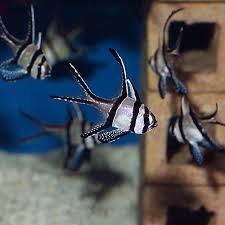In Chinese culture, dragons (龙, Lóng) are revered as celestial beings that bridge the heavens, the earth, and the spiritual realm. Unlike the fearsome dragons of Western mythology, Chinese dragons are seen as symbols of wisdom, power, protection, and divine guidance.
Among their many roles, dragons hold a significant place in ancestor worship and spiritual rituals, acting as guardians of ancestral spirits, messengers between the living and the dead, and divine forces that bless families with prosperity and harmony. From imperial ceremonies to local traditions, dragons are deeply embedded in the spiritual and ritualistic practices that honor past generations and maintain a connection with the afterlife.
This article explores the role of dragons in ancestral worship, their presence in spiritual rituals, and their connection to the veneration of spirits in Chinese tradition.
1. The Role of Dragons in Ancestral Worship
Dragons as Guardians of Ancestral Spirits
Ancestor worship, or “敬祖” (Jìngzǔ), has been a fundamental part of Chinese culture for thousands of years. It is believed that deceased ancestors continue to influence the lives of their descendants, providing blessings and protection if honored properly.
- In many ancient temples and ancestral halls, dragons are depicted watching over ancestral altars, symbolizing their role as protectors of family heritage and lineage.
- The presence of dragon motifs on ancestral tablets and tombstones reinforces the belief that dragons safeguard the spirits of the deceased, ensuring that they rest peacefully.
- Some traditions even hold that the spirits of great ancestors may take the form of dragons, rising to the heavens as celestial beings.
The Dragon as a Bridge Between Generations
In Chinese spiritual beliefs, dragons serve as a link between the past, present, and future. They are thought to connect:
- The living (descendants) who perform rituals and offerings.
- The deceased ancestors who receive these offerings and provide blessings.
- The divine realm, where ancestral spirits may ascend and continue guiding their families.
This concept is reflected in dragon-adorned incense burners, ceremonial robes, and altar decorations used during ancestor veneration ceremonies.
2. Dragons in Ancestral Rites and Festivals
Dragon Motifs in Qingming Festival (Tomb-Sweeping Day)
One of the most important occasions for ancestor worship is the Qingming Festival (清明节, Qīngmíng Jié), where families visit the graves of their ancestors to clean the tombs, offer food, and burn incense.
- In certain regions, dragon-shaped incense sticks or candles are used during the ceremony to symbolize the dragon guiding the spirits of the ancestors.
- Some families create paper dragon effigies that are burned as offerings, representing a celestial messenger delivering their prayers and respect to the ancestors.
Dragon Dances in Ancestral Celebrations
The dragon dance (舞龙, Wǔ Lóng) is often performed during major festivals that include ancestor veneration, such as Lunar New Year and temple ceremonies.
- The dance represents the spirit of the dragon awakening to bless the community and honor those who came before.
- In some ancestral celebrations, the dragon dance is thought to call forth the spirits of honored ancestors, inviting them to partake in the festivities and receive blessings.
These traditions demonstrate how dragons serve as spiritual guardians and conduits for ancestral connections.
3. Dragons in Imperial Ancestral Worship
The Emperor as the “Son of the Dragon”
In ancient China, emperors were believed to be the “Sons of the Dragon” (龙子, Lóngzǐ), connecting them to divine ancestry and the Mandate of Heaven (天命, Tiānmìng).
- As the ultimate guardian of the empire, the emperor performed grand ancestral ceremonies in which dragon imagery played a central role.
- The Imperial Ancestral Temple (太庙, Tàimiào) in Beijing features intricate dragon carvings, signifying the sacred connection between the ruling family and their forebears.
- The emperor’s dragon robe (龙袍, Lóngpáo), adorned with golden dragon motifs, was worn during these rituals to symbolize his divine duty in honoring past rulers.
Dragon Thrones and Imperial Tombs
Even in death, emperors were honored with dragon-infused burial sites.
- The Ming and Qing dynasty tombs feature dragon-engraved stone gates and pathways, believed to ensure a smooth transition of the emperor’s spirit to the afterlife.
- In some legends, imperial ancestors were escorted to heaven on the backs of dragons, reinforcing the belief that dragons played a role in the sacred lineage of the ruling families.
These imperial traditions highlight how dragons were both a spiritual and political force in ancestral veneration.
4. Dragons in Taoist and Buddhist Rituals for Ancestors
Taoist Dragon Spirits in Afterlife Rites
Taoism (道教, Dàojiào) has long associated dragons with spiritual transformation and the balance of cosmic forces.
- In Taoist ancestral ceremonies, dragon symbols are placed on altars to guide spirits safely through the realms of existence.
- The Azure Dragon (青龙, Qīnglóng), one of the Four Celestial Beasts, is believed to help souls ascend to a peaceful afterlife.
- Taoist priests often chant incantations invoking dragon spirits to purify ancestral shrines and expel negative influences.
The Dragon Kings in Buddhist Memorial Rites
Buddhism in China also integrates dragon imagery into rituals for honoring the dead.
- Dragon Kings (龙王, Lóngwáng) are considered protectors of Buddhist temples and ancestors’ spirits.
- During Ullambana (盂兰盆节, Yúlánpén Jié), a Buddhist festival dedicated to helping lost souls find peace, some temples include dragon carvings and statues to symbolize divine assistance in guiding spirits toward enlightenment.
These practices illustrate how dragons function as celestial intermediaries between the human and spiritual worlds.
5. The Legacy of Dragons in Modern Ancestral Worship
Dragon Symbols in Contemporary Ancestral Rites
Even in modern times, dragons continue to play a role in ancestral veneration.
- Many Chinese households keep ancestral altars adorned with dragon-etched incense holders or calligraphy depicting dragons as protectors of family honor.
- Some Chinese cemeteries feature dragon-shaped pathways, designed to channel good fortune and harmony for ancestral spirits.
Dragons in Overseas Chinese Communities
For Chinese diaspora communities worldwide, the dragon remains a key symbol in ancestral traditions.
- Temples dedicated to ancestors often include dragon motifs as a way to preserve cultural heritage.
- Dragon dances and ceremonies are performed in Chinatowns around the world during Qingming Festival and Ghost Month, ensuring the continued honor of ancestors across generations.
This enduring legacy underscores how dragons continue to be revered as sacred protectors of family and tradition.
Conclusion
From ancient imperial rituals to modern family altars, dragons have remained a powerful force in ancestral worship and spiritual practices in Chinese culture.
As guardians of lineage, messengers of the afterlife, and protectors of ancestral spirits, dragons symbolize the deep-rooted connection between the living and the dead, the earthly and the divine.
Whether in Qingming ceremonies, Taoist purification rituals, or Buddhist memorial rites, the presence of dragons reinforces the belief that ancestral spirits continue to guide and bless their descendants.
Even today, the dragon’s image remains a sacred and enduring symbol of respect, protection, and the continuity of family honor—a testament to its timeless role in Chinese spiritual and cultural traditions.




